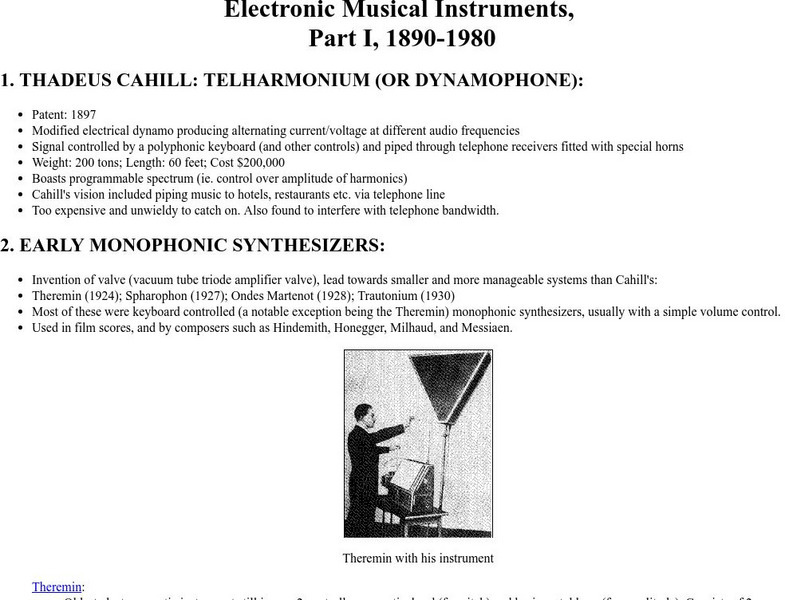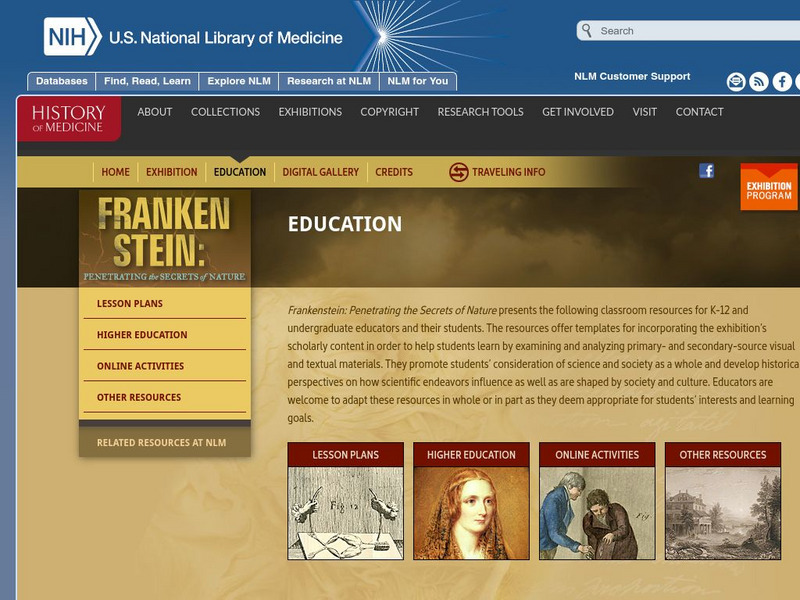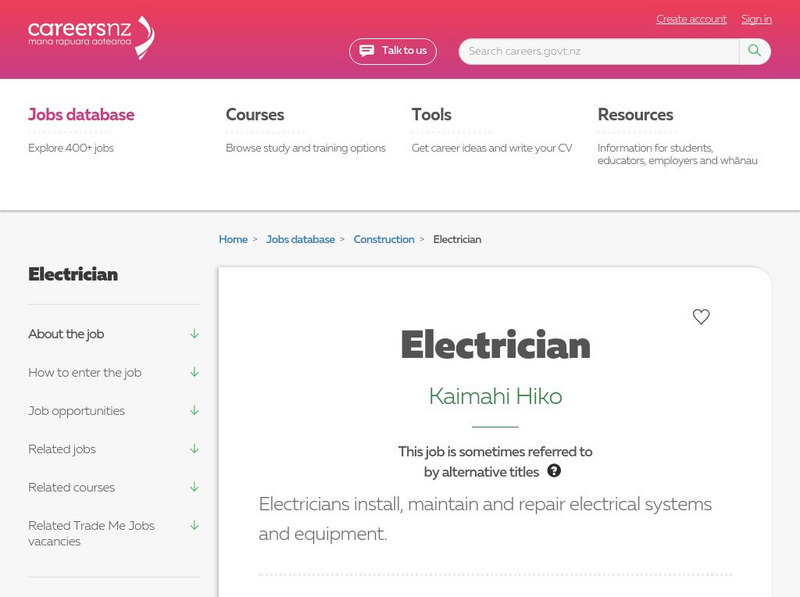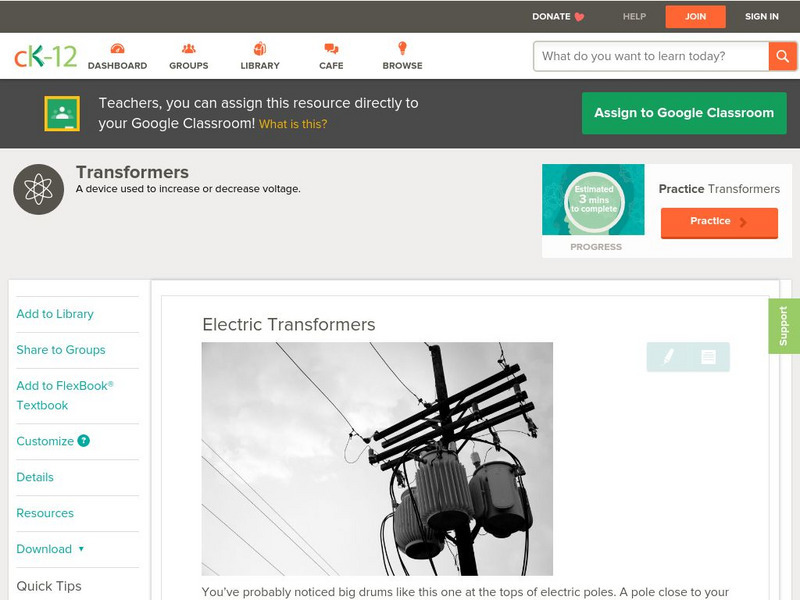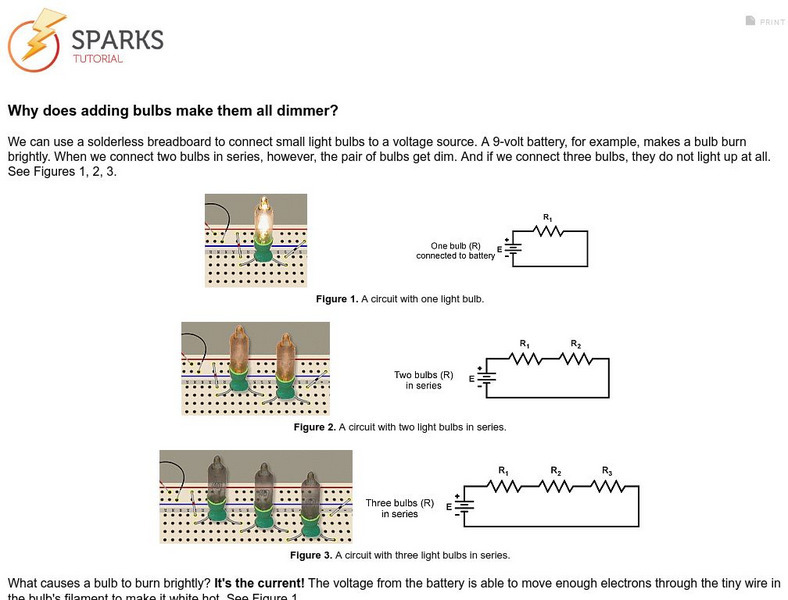Hi, what do you want to do?
Physics Classroom
The Physics Classroom: Journey of a Typical Electron
In the wires of electric circuits, an electron is the actual charge carrier. In this article, an electron's path through the external circuit is introduced.
Physics Classroom
The Physics Classroom: Current Electricity: Circuit Connections: Series Circuits
When two or more electrical devices in a circuit can be connected, it is considered a series connection or a parallel connection. When all the devices are connected using series connections, the circuit is referred to as a series...
Khan Academy
Khan Academy: Q&a: Neuron Depolarization, Hyperpolarization, & Action Potentials
Khan Academy answers a question about hyperpolarization and depolarization with a written explanation and links to helpful videos.
American Association of Physics Teachers
Com Padre Digital Library: Open Source Physics: Ejs Photoelectric Effect
Experience the photoelectric effect by choosing different light frequency, voltage, and metals to stop current from flowing in a circuit.
Concord Consortium
The Concord Consortium: Molecular Workbench: Charging Your Hair
Adjust the voltage on a Van der Graaff generator to see how the charges will affect a person's hair.
NBC
Nbc: How the Grid Powers a Continent
Read here about "The Grid," the largest machine ever built by humans. The Grid is he giant network of high-voltage power transmission wires that covers the entire United States and much of Canada.
Walter Fendt
Walter Fendt: Simple Ac Circuits
This simulation shows a simple circuit consisting of an AC voltage source and, depending on the button selected, a resistor, a capacitor or a coil.
Georgia State University
Georgia State University: Hyper Physics: Electric Potential Energy
This site from Georgia State University defines electric potential energy and relates it to the concept of electric potential. Discusses the idea of a reference point or a zero potential location.
Georgia State University
Georgia State University: Hyper Physics: Capacitors
Online university physics text called "Hyperphysics". Three sections here: Capacitors, Capacitor Combinations, Charge on Series Capacitors. These are nice clean lessons, good illustrations, many hotwords to assist. A fine online lesson,...
Boston University
Elementary Physics: Current and Resistance
A general summary of electrical resistance including a comparison of AC and DC current.
Cosmo Learning
Cosmo Learning: Advanced Analog Integrated Circuits
A collection of video lectures from a course introducing students to the advanced analog integrated circuits. Webpage includes twenty-seven lectures from a professor at the University of California, Berkeley. Lectures vary in length and...
Stanford University
Stanford University: Electronic Instruments
This resource provides information about a number of different types of synthesizers used from 1890 to 1980.
Wolfram Research
Wolfram Science World: Capacitor
A rather mathematical explanation of a capacitor. Gives all the appropriate formulae, with many hotwords for further info.
Science and Mathematics Initiative for Learning Enhancement (SMILE)
Smile: Electromagnets
This lesson plan contains several activities designed to help the student understand the magnetic effects of an electrical current.
Other
Beginner's Guide to Measurement in Electronic and Electrical Engineering [Pdf]
The National Physical Laboratory, which is the UK's National Measurement Institute, offers a Beginner's Guide to Measurements in Electronics and Electrical Engineering. Discusses how electric currents are measured and offers images.
National Institutes of Health
National Library of Medicine: Electricity, Frankenstein, & the Spark of Life
Using an online exhibition, investigate how Mary Shelley's horror science fiction story, Frankenstein, reflects the knowledge and studies of electricity, and how those fictional ideas are used in modern medicine.
Careers New Zealand
Career Nz: Electrician
This site contains information about becoming an Electrician in New Zealand. While some of the information is specific to New Zealand, there is also data that is uniform to the career.
Famous Scientists
Famous Scientists: Georg Ohm
Find out about the German physicist and mathematician whose work in the field of electrical current shaped the study of electricity.
CK-12 Foundation
Ck 12: Physical Science: Electric Transformers
[Free Registration/Login may be required to access all resource tools.] Discusses how an electric transformer works and step-up and step-down transformers.
Museum of Science
The Atom's Family: Fruity Electricity
Frankenstein's electricity is out. In this activity, students help him find another source of energy using citrus fruit. Good for students who want to do their own projects or for class lessons.
Physics Aviary
Physics Aviary: Practice Problems: Lc in Ac Problem
Determine the rms current in an LC circuit powered by an AC power supply. Then find the frequency that will cause a spike in current in the circuit.
Physics Classroom
The Physics Classroom: Power: Putting Charges to Work
In this tutorial the concept of how electrical energy is transformed is introduced. Learn how electric charges actually work and take the interactive quiz to assess your understanding.
Concord Consortium
Concord Consortium: Sparks Tutorial: Using an Oscilloscope
Learn how to use an oscilloscope.
Concord Consortium
Concord Consortium: Why Does Adding Bulbs Make Them All Dimmer?
This tutorial illustrates why adding bulbs to a circuit makes all the bulbs dimmer.
Other popular searches
- Dc Voltage
- Voltage Areas
- Voltage Current
- Ac Voltage
- Voltage Resistance
- Current and Voltage
- Battery Voltage Experiment
- Voltage Drop
- Current Voltage Resistance
- Science Voltage
- Voltage Comparators
- Voltage Compartors













